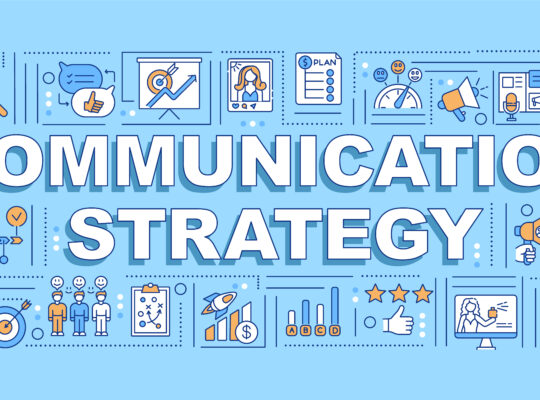| Communication Foundations | ||
| Instructor: Tatiana Kolovou & Brenda Bailey-Hughes | ||
| Released: 11/5/2020 | Course Details 1h17m Beginner | |
| Skills Covered Communication | Course Link | |
| Professional Certifications and Continuing Education Units (CEUs) Project Management Institute – PDUs: 1.25 hour National Association of State Boards of Accountancy (NASABA) – CPE: 3.4 | ||
The Four Communication Building Blocks
The Four Building Blocks: People
Before communicating, consider each of these four building blocks.
Four Communication Building Blocks
- People: Who will be there? What do I need to know about them?
- Message: Is email appropriate or should I pop in for a quick chat?
- Context: How’s the timing of this email?
- Listening: What kind of listener do I want to be right now?
Considering People
“Think -> Feel -> Do” model
Mental Filters
Levels of knowledge, personal concerns, or preconceived notions Mental filters dictate how we understand messages.
The Four Building Blocks: Message
Identify the right channel to reach someone urgently. Does your boss respond to text faster than email?
Considering Messages
- Is your message meant to inform? Then your receive needs to understand
- Is your message meant to persuade? Craft an argument with evidence and reasoning.
- Bundle primary and secondary information
- Check your message for understanding
The Four Building Blocks: Context
It’s important to consider the timing, location and relationship when delivering a message. Without the proper context, the message will fail to be delivered or it makes for a bad listening situation.
The Four Building Blocks: Listening
We listen more than we speak daily.
Consider Listening
- Listen with your ears, eyes and heart.
- Use reaffirming nonverbals.
- Connect
Communication for Common Situations
When You Socialize in Professional Settings
Before people decide what they think of your message, they decide what they think of you.
- Smile authentically
- Stand or sit tall
- Minimize fidgeting (stillness means calmness)
- Mine for connections
- Keep it positive
- Asked open-ended questions
Tool Kit: Social Settings
Neutral Context Drills – Create rapport through the common item. Ask another open-ended question.
Workplace Context Drills – ignore your phone or table, tune into the people. Ask a colleague an open-ended question. Keep the conversation light. Practice open gestures and nonverbals.
Professional Context Drills – introduce yourself to three people. Practice repeating names. Follow up with your new contacts.
When You Run Meetings
A smart agenda is specific about how people can best prepare for the meeting.
Keep meetings to 60-90 minutes max. Encourage discussion (less talking from the presenter).
Teleoanticipation
Biological process for pacing oneself.
Running Meetings
- Allow people time to think
- Loop in virtual participants
- Paraphrase content and emotion
- Pay attention to nonverbals
Toolkit: Meetings
Identify three new behaviors that would allow you to become a better facilitator.
Example
- Send a meeting agenda to prepare participants.
- Plan thoughtful questions
- Accommodate or rotate meeting times.
- Ask a great question and then wait in silence for a few seconds
- Pay attention to non-verbal queues
- Summarize a meeting with actions
When You Send Emails
Writing Emails
- Think of your reader’s action
- State the action in the first or second sentence
- Think twice before sending if no action is necessary
- Proofread before sending, always!
- Adjust your mindset to find errors
Proofreading Emails
- Grammar
- Numerical accuracy
- Spelling of names
Toolkit: Email
Audit your last 5 email messages using a grid to grade your performance.
When You Are Explaining
Explaining a Task
- Determine process or product
- Place actions into buckets
- Three buckets to explain (before, during and after)
- Flex to the learner’s need
- What -> Why -> How logic
- Tell your learner why task matters
- Show and tell
- Learners must practice in a safe space
Toolkit: Explanations
Learning Style Exercise
- Pick three of four coworkers to teach how to make your favorite meal.
- Find out how they process information.
- Identify the big-picture people versus the step-by-step people.
- List your instructions
- Share and receive feedback
Break Down a Process Exercise
- Think of a process your team members do.
- List the steps.
- Break that list into separate buckets
- Consider visual support
What/Why/How Exercise
- Think of what you need to explain.
- Write down the “what” in one sentence.
- List three reasons: the “why”
- Write down the steps: the “how”
- Practice with a friend
Toolkit: Advise
Give Advice Toolkit
- Find someone who is older than you or has more experience
- Write down the person’s name
- Find something in common
- Build credibility with a past experience
- Rewrite words of phrases in a respectful, humble way.
Communication for Challenging Situations
When You Pitch Ideas
Pitching an Idea
- Think about the people whose approval you need.
- Consider the decision-making style of the person.
- Thinker
- Evidence
- Facts
- Comparisons
- Benchmarks
- Feeler
- People benefited
- Values honored
- Harmony upheld
- Thinker
- Consider the message. (What -> Why -> How)
- Timing matters when you’re influencing.
- Ask questions, talk less, listen deeply
Toolkit: Pitch New Ideas
- Identify essential people to your network
- Reach out to them once a month
- Stay organized and track your communications
When You’re Asking For Something
Our work lives are filled with opportunities to ask for what we need. Be direct when asking.
Asking for Something
- State the action.
- Create urgency.
- Make the steps easy.
Toolkit: Making An Ask
Making an Ask Toolkit
- Spend 30 days asking for low-stake things every day
- Get comfortable with the idea of rejection
- Ask a friend to join you
- Imaging the request is for someone you care about. Imaging how you would ask on their behalf.
- If you never ask, you will never know.
When You’re Caught Off Guard
Catching Yourself Off Guard
- Buy time.
- Calm yourself.
- Use a response formula.
Response Formula
- What I know + What I don’t know + How I’ll find out
Toolkit: When You’re Caught Off Guard
Practice buying time, calming yourself and using the response formula; “what I know”, “what I don’t know”, and “how I’ll find out”.
When You’re Criticized
Managing Criticism
- Check your listening bias
- Give time to ponder criticism
- Demonstrate empathy
- Ask questions
- Use “Yes, and…”
Ignore your first two thoughts! Lead with your third thought.
Toolkit: Criticism at work
Think of the last three times you faced criticism. Write a response that is negative and accusatory, then write a response based on the training received that is positive and expresses gratitude for feedback.
When You are Presenting Up
Presenting Up
- Know your audience
- What are the pain points around the topic?
- How much do they know about the topic?
- What are their core values?
- Lead with your conclusion
- Share your suggestion or key idea within the first 60-90 seconds of your presentation
- Introduce your topics with SCQA
- Situation – current situation
- Complication – what is the complication or opportunity
- Question – key question that needs to be addressed
- Answer – what is the recommended answer
- Go for the forest
- Focus on the big picture
- Don’t get tangled in the details – but be prepared to dive deep if asked
- Expect to be grilled
- C-Suite is known for tough questions
- Plan to be interrupted often
- Be prepared
- Answer concisely
- Redirect back to your main theme
Toolkit: Presenting Up
Presenting Up Exercise
- Meet with a colleague.
- Review main points
- Ask three tough questions the audience might ask.
- Repeat three times with additional colleagues.
Imagine Scenarios
- Decision maker can’t attend the presentation
- You have to turn your presentation into a conversation
- Technology doesn’t work
- Decision maker joins presentation by phone
 | Remember! To experience the full benefit of this guide, I highly recommend you watch the full training session. |






